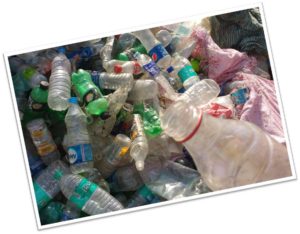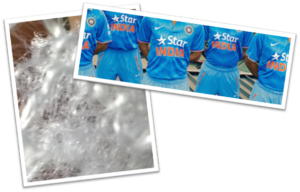Understanding PET Recycling Landscape in India
Polyethylene terephthalate (PET) is one of the most widely used plastics today. PET bottles are ubiquitous in our day-to-day lives–one has to just look around to spot a PET bottle containing mineral water or soft drink or used for other applications. With such wide usage (in 2015-16, ~ 900 KT of PET was used in India), comes the question, what happens to the PET bottles after use. Are they recyclable? If so, how can they be recycled? What can be made out of recycled PET? How much of PET consumed in India ends up being recycled, in a given year?
We went looking for answers to these questions. This site documents what we found.

PET bottles, post use, still carry a lot of value, and recycled PET (r-PET) can be used in a wide variety of applications. This makes post-consumer PET bottles a very sought after item by waste collectors. Discarded PET bottles fetch waste collectors Rs 14-15/kg. These bottles are bought by kabadiwallahs or waste traders, who employ people to segregate, sort and further sell it to large vendors or recyclers. The caps, neck rings, labels (non-PET components) are removed, and the bottles are shredded, washed, and sold as what is called ‘washed flakes’. These washed flakes are then used to make (predominantly) polyester fiber, which is used as filling material for cushions, pillows, and converted to fabrics for use in clothing, upholstery, etc. These end products sell at anywhere between Rs 50-110/kg; the market for r-PET products is quite large. There are 40+ large manufacturers across India who use r-PET as raw material. The PET recycling business can be estimated (roughly) to be around Rs 3,000- 4,000 crore in a given year in India.
